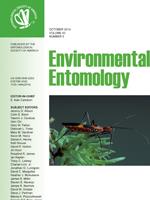Predicting the potential habitat of species under both current and future climate change scenarios is crucial for monitoring invasive species and understanding a species' response to different environmental conditions. Frequently, the only data available on a species is the location of its occurrence (presence-only data). Using occurrence records only, two models were used to predict the geographical distribution of two destructive invasive termite species, Coptotermes gestroi (Wasmann) and Coptotermes formosanus Shiraki. The first model uses a Bayesian linear logistic regression approach adjusted for presence-only data while the second one is the widely used maximum entropy approach (Maxent). Results show that the predicted distributions of both C. gestroi and C. formosanus are strongly linked to urban development. The impact of future scenarios such as climate warming and population growth on the biotic distribution of both termite species was also assessed. Future climate warming seems to affect their projected probability of presence to a lesser extent than population growth. The Bayesian logistic approach outperformed Maxent consistently in all models according to evaluation criteria such as model sensitivity and ecological realism. The importance of further studies for an explicit treatment of residual spatial autocorrelation and a more comprehensive comparison between both statistical approaches is suggested.
How to translate text using browser tools
1 October 2014
Predicting the Geographical Distribution of Two Invasive Termite Species from Occurrence Data
Francesco Tonini,
Fabio Divino,
Giovanna Jona Lasinio,
Hartwig H. Hochmair,
Rudolf H. Scheffrahn
ACCESS THE FULL ARTICLE
It is not available for individual sale.
This article is only available to subscribers.
It is not available for individual sale.
It is not available for individual sale.

Environmental Entomology
Vol. 43 • No. 5
October 2014
Vol. 43 • No. 5
October 2014
Bayesian logistic modeling
MaxEnt
presence-only data
species distribution model
subterranean termite




